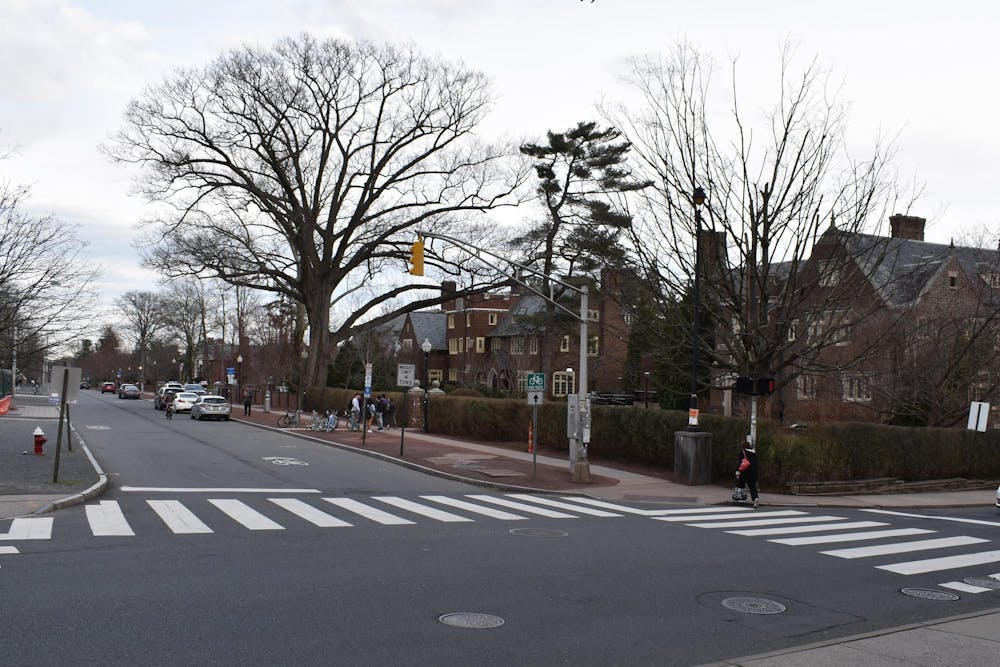This year, 83 percent of sophomores participated in Street Week, and 1,263 students were placed into an eating club. We’ve all heard the arguments for and against bicker and for and against eating clubs as institutions. This year, we asked our writers to share more nuanced reflections on what works and doesn’t work about Street Week 2025 – what should be preserved, and what should be reformed.
Why are co-ops so underrated?
By Siyeon Lee, Associate Opinion Editor
Laughter, music, and damn good tacos were my main takeaways from the Brown co-op’s sophomore dinner a few weeks ago. In the warm beige glow of the bustling kitchen, I kept thinking to myself, “Why does nobody talk about how nice this is?” While I was set to bicker in the upcoming week, I saw myself thriving in one of Princeton’s four co-ops, student-run dining communities where members cook, eat, and clean together.
Co-ops are a niche choice at Princeton, but they deserve more appreciation. They offer a tight-knit community, cost nearly 95 percent less than eating club dues, and teach critical life skills — Cooking? Cleaning? Who would’ve thought? It’s natural to gravitate toward the Street when most upperclassmen join eating clubs — I did, too. But while people cite social life and community as their reasons for joining, co-ops offer both at a fraction of the price. Sure, they’re different — you won’t have members-only formals or hundreds of members to constantly interact with, as most co-ops range from 30–50 people. But my friends in co-ops still enjoy the street through guest meals, and many use the money they save on multi-city trips across the globe or even a car.
Though I love my eating club, I plan to reevaluate next fall whether a co-op might be a better option. Whether you’re in an eating club or not, you absolutely should, too.
Associate Opinion Editor Siyeon Lee is a sophomore from Seoul, South Korea intending to major in History. She can be reached at siyeonlee[at]princeton.edu.
Clarity about eating club life goes a long way — not just during Bicker
By Shane McCauley, Assistant Opinion Editor
This bicker season, Princeton students of all class years got a unique look into eating club life through an Instagram account called The Hungry Tiger. In a series of reels, the account’s creators tried club cuisine, interviewed members and dining staff, and gave a glimpse into each club’s unique traditions.
With uniformly positive food reviews and quick jump-cuts, I wouldn’t call the account’s content independent journalism. But as a first-year with little knowledge of eating club culture, it still helped assuage my anxiety about club life. Clubs should continue offering digital glimpses into club life to familiarize first-years with eating clubs beyond parties and reputations.
Before I arrived at Princeton, I saw eating clubs as intimidating, elitist institutions shrouded in mystery. And as a first-year, attending their parties doesn’t exactly convey what being a member is like. The Hungry Tiger’s content — simple as it is — still offered valuable information about club atmospheres as my sophomore year draws closer.

While students can learn about club cultures by participating in meal exchanges or pre-bicker events, many first-years don’t have close friends in several clubs with whom they can meal swap, and pre-bicker events are generally limited to sophomores.
Unfortunately, the account was unable to film inside Cottage or Ivy, in the latter case due to a strict no-filming policy. But clubs can maintain their alluring reputations without keeping themselves entirely secret. To increase transparency about club life for all students — including first-years — clubs should take every opportunity to expand their digital presence, perhaps beyond simple food reviews.
Shane McCauley is an Assistant Opinion Editor from Boston intending to major in Anthropology. He can be reached at sm8000[at]princeton.edu.
Bicker isn’t better behind the scenes
By Christofer Robles, Editorial Board Chair
While I have previously defended Bicker in this paper, this year I am feeling much less sympathetic. I call on The Interclub Council (ICC) to investigate and publicize the Bicker processes of each club. Without transparency about various clubs’ Bicker processes, it’s impossible to know which aspects of bicker are essential to preserving club cultures and which ones are inequitable. Only then can any reasonable debate on the merits of the process be had.
I continue to believe in the spirit of Bicker: “every club on Prospect has an identity — Bicker just makes that identity intentional.” But while I, and others before me, have called for “a strong commitment to a better Bicker,” it is becoming increasingly clear that “better Bicker” is too ill-defined of a goal for a few twenty-somethings to accomplish without a commitment to finding concrete reforms.
Listing grievances with a specific club would be counterproductive — the shortcomings of Bicker are shared between the selective clubs. Talk to any upperclassman in any Bicker club: injury is a feature of the process writ large.
I call on the ICC to hire an independent law firm to investigate problematic Bicker practices, publish their findings, and push Prospect Avenue towards a more progressive Bicker. Bickerees are often ignorant to the inner workings of their prospective clubs — they are owed transparency. Clubs should be beholden to common standards of inclusivity — scandal is not foreign to the Street, and social stigma and club loyalty prevent Bicker from receiving its due open criticism and correction.
Christofer Robles is the Editorial Board Chair for the 149th Board and a member of the illustrious Cap & Gown Club. He can be reached at cdrobles[at]princeton.edu.
Why Cap & Gown was the most bickered eating club
By Jorge Reyes, Columnist
This year, Cap & Gown was the most bickered club. As a first-year on financial aid planning on bickering next spring, this does not surprise me.
While club culture, leadership, and other factors certainly contribute to the choices made by bickering students each year, strong financial aid policies can encourage students to consider clubs that are otherwise inaccessible and impact the makeup of clubs’ Bicker classes.
For students seeking to join a club whose dues exceed the University’s financial aid allowance, Cap & Gown is one of the most accessible. Their commitment to ensure students on full financial aid pay no out-of-pocket expenses, as well as the grant provided to sophomores to cover the difference between fees and University aid, does not go unseen. Ivy and Cannon are the other bicker clubs with dues over the University allowance.
Although the rest of the Bicker clubs also have ways to reduce the financial burden for students on aid, Cap & Gown stands out by assuring that all students on financial aid receive a grant to help with fees rather than hold a “case-by-case” process like some of the other clubs.
For future Street Weeks, I encourage the leadership of all clubs to consider the role their financial aid policies play in attracting members. Take it from a current first-year who participated in the Freshman Scholars Institute and is already planning for Street Week: Cap & Gown’s transparent financial aid policies make it an attractive choice for many bickerees.
Jorge Reyes is an Opinion columnist for the ‘Prince.’ You can read his column, “No Tiger Left Behind,” every three weeks on Tuesday here. He can be reached at jr7982[at]princeton.edu.
Spread bicker out so students aren’t boxed in
By Sophia Zuo, Contributing Writer
While Princeton students are no stranger to rainbow-striped Google calendars, or sprinting from one commitment to the next, the compressed duration of Bicker adds unnecessary strain and fatigue to an already stressful situation.
As I witnessed firsthand, double bickerees had to move from a morning of classes to a grueling afternoon of bicker sessions, and chose chugging caffeine over getting a good night of rest in order to do it all.
Students inevitably take bicker extremely seriously — it’s a heavy determinant of future social circles. But its condensed timeline creates a pressure-cooker environment where students are constantly on edge, yet must appear relaxed and carefree in order to make a good impression.
Bicker is comparable to standardized testing: both are one-shot, widely bought-into, and high-stakes. But while the SAT or AP exams may measure intelligence or understanding of an academic topic, bicker serves to measure something as volatile as personality, which, during the bicker process, we lose control over.
It can be argued that a process as stressful as bicker should be as short as possible. However, if the length of bicker means students are performing worse and unable to reflect their best selves, it’s worth reconsidering alternatives.
Clubs could spread their Bicker sessions over longer periods, or the ICC could mandate that clubs host sessions across different days. For those who choose to double Bicker, such changes would make Bicker a much more forgiving process, and allow students to come to sessions unexhausted and as genuine as possible.
Sophia Zuo is a sophomore contributing writer from Hsinchu, Taiwan. She can be reached at sz5856[at]princeton.edu.








